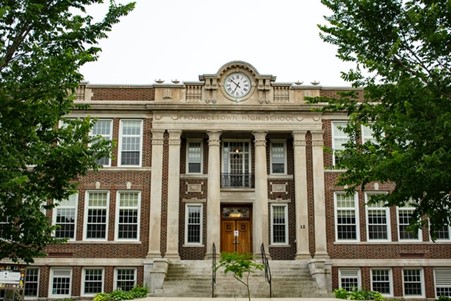Matthias O’Meara of Choice Advisors provides financial solutions and independent advisory services to schools and other organizations. In the article below, Matthias O’Meara explains what congressional funding means for primary and secondary education.
At the height of the COVID-19 pandemic, Congress allocated an increased budget to help K-12 schools shift to online classrooms and overcome the sudden shakeups rattling American education. In a recent update, the Department of Education has announced that schools will have an additional 18 months to use that funding, helping to cover infrastructure costs, health, and safety requirements, and more.
After ongoing lockdowns and regulations, many school districts feared that the funding would dry up before they were able to complete their necessary upgrades. In today’s post, Matthias O’Meara explores how these new guidelines will affect K-12 schools and learn why Congress and the Department of Education have agreed to move the deadline.
Why the Department of Education Decided to Extend the Deadline
Originally, the Department of Education set a deadline for schools to use ESSER Act funds by the end of the 2021 fiscal year. As the year came to an end, though, much of the allocated funding had not yet been used, as many contractors had fallen behind schedule due to ongoing COVID regulations and lockdowns. Now, the deadline has been extended to the end of September 2024 says Matthias O’Meara.
This extension will give schools more time to make the necessary changes to their infrastructure and curricula, and it will also allow them to continue providing services to students who have been impacted by the pandemic.
In recent statements, Matthias O’Meara explains that the Department of Education has stated that the extension will give schools the stability and certainty they need to plan for the upcoming school year. It has also been noted that the additional time will allow schools to address the learning loss that many students have experienced during the pandemic.
Much of the Funding Will Go to Title 1 Schools
The Department of Education’s ESSER Act funding is available to all public schools, but the majority of the money is earmarked for Title 1 schools. Title 1 is a designation given to schools with high concentrations of poverty, and these schools often lack the resources of their more affluent counterparts explains Matthias O’Meara.
In the 2019-2020 school year, there were approximately 50,000 Title 1 schools serving more than 32 million students. These schools receive additional funding from the federal government to help level the playing field, and funds provided through ESSER will be used to support their continued operations during the pandemic recovery period.

 Some Public and Charter Schools Will Use the Funds to Upgrade HVAC Systems
Some Public and Charter Schools Will Use the Funds to Upgrade HVAC Systems
Matthias O’Meara says that the most common use of federal funding will be to upgrade school ventilation systems. In many cases, school buildings are old and do not have proper ventilation to remove virus particles from the air. As a result, students and staff are at a higher risk of contracting COVID-19. Additionally, many have grown moldy over the years and need upgrading to meet building codes.
In order to mitigate this health hazard, schools will need to install new HVAC systems or make significant upgrades to their existing ones explains Matthias O’Meara. This will be a costly endeavor, but the Department of Education’s decision to extend the deadline to September 2024 will give schools the time they need to complete the work.
The Funding Comes with Some Strings Attached
While the billions of dollars of funding provided through ESSER is a welcome relief for many cash-strapped school districts, it comes with some conditions. Matthias O’Meara explains that schools must use the money to support students and staff during the pandemic, and they must also comply with health and safety guidelines from the Centers for Disease Control and Prevention (CDC).
In addition, schools must maintain their current level of spending on education-related expenses. Matthias O’Meara states that they can use the ESSER Act money to cover additional costs, but they cannot use it to replace existing funding. This has meant that many schools have had to come up with possible projects to access the funds, although it’s helped schools in poorer districts provide for their students.
What the Next Two Years of Funding Will Mean for Charter Schools
ESSER Act funds will be a welcome relief for charter schools, which often have less funding than traditional public schools. Matthias O’Meara explains that the money can be used to cover a variety of expenses, including teachers’ salaries, school supplies, and facility upgrades.
However, it’s important to note that charter schools are not subject to the same restrictions as public schools, meaning that charter schools will have more flexibility in how they use the funds says Matthias O’Meara. This will likely prove to be helpful as they plan for the next school year.
Final Thoughts
In the long term, the Department of Education’s decision to extend ESSER funding will help schools recover from the pandemic and continue to provide a high-quality education for their students explains Matthias O’Meara. However, it’s important to note that the money won’t be a cure-all, and schools will still need to make tough decisions about how to use their limited resources.








